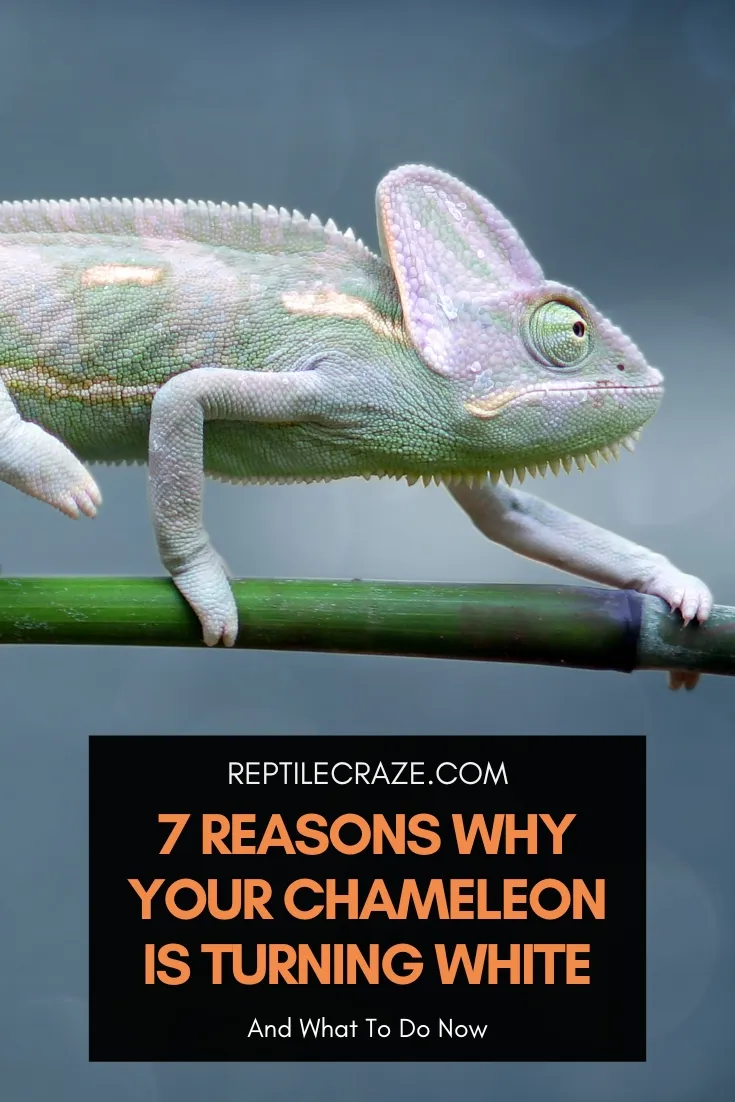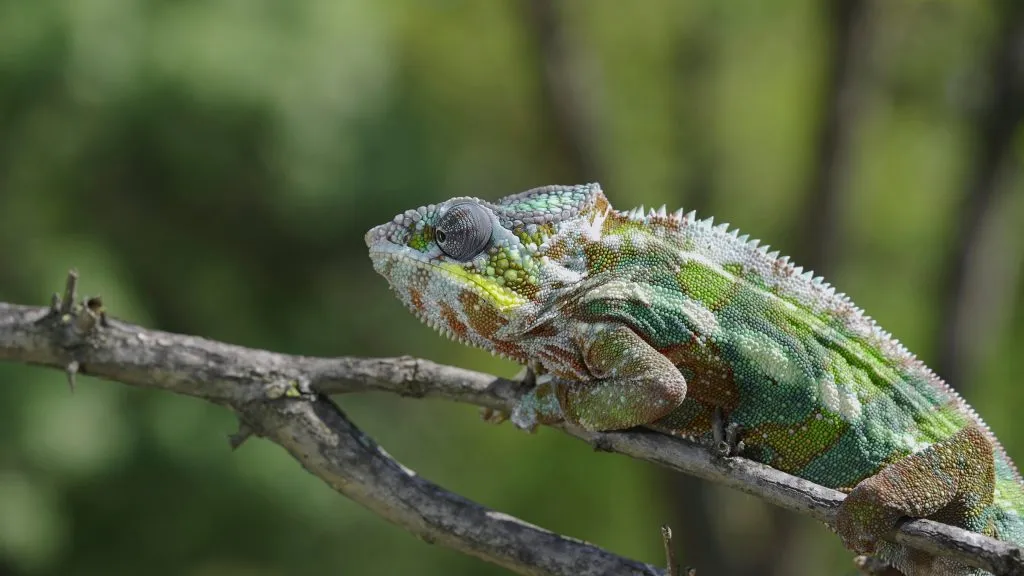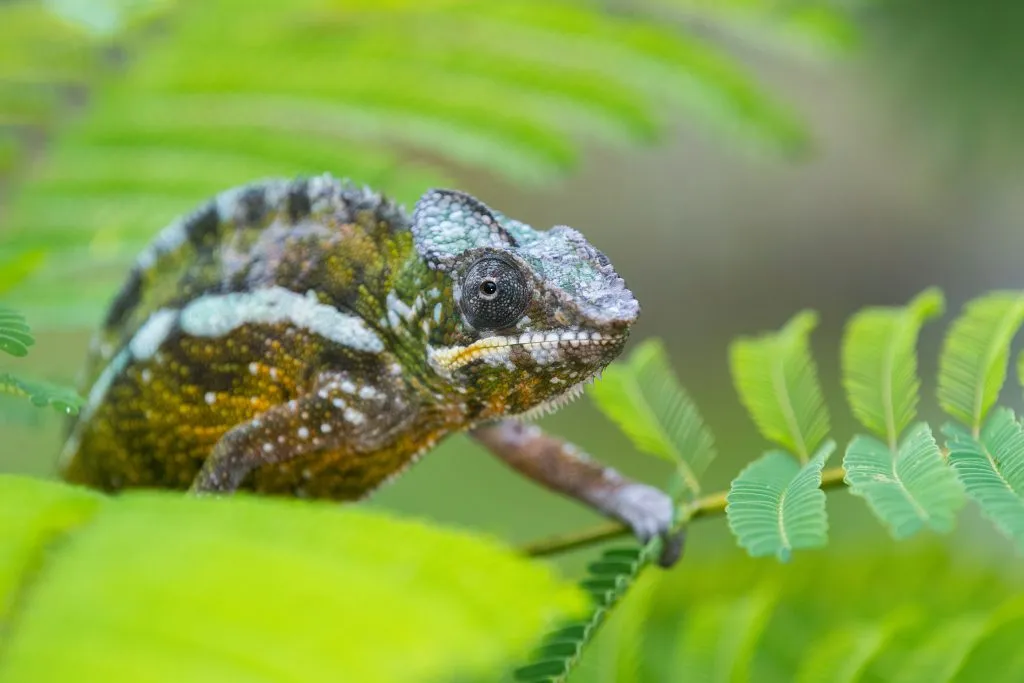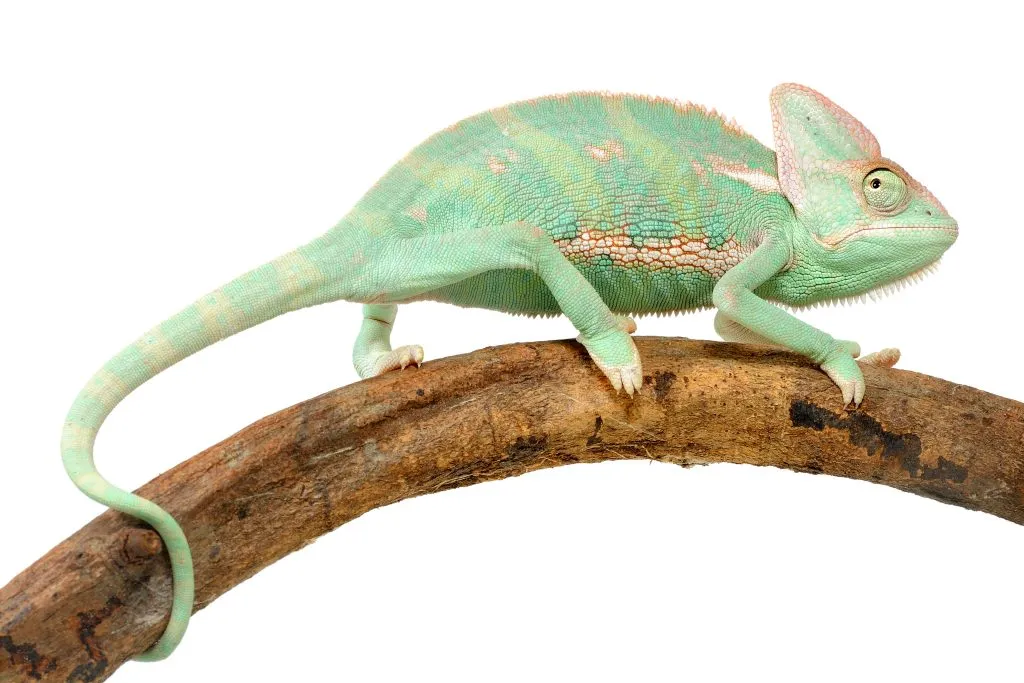
Chameleons are famous for their uncanny ability to change colors. As the popular 1980s song, Karma Chameleon, goes, “Loving would be easy if your colors were like my dreams: red, gold, green.” White is evidently not on this list, so when a chameleon turns white, it’s natural to wonder why.
There are many reasons why a chameleon may be turning white, including stress, illness, and even shed cycles. If you notice that your chameleon’s skin is starting to look pale, dull, or outright white, it could be a sign of one of these underlying causes.
In this article, we’ll explore why your chameleon may be turning white or pale, how to address the underlying issues, and when to visit a vet.
Table of Contents
Why Is My Chameleon Turning White?
As mentioned, there are multiple reasons why a chameleon may be turning white. It’s important to identify why your chameleon is showing these odd colors so you can address it as soon as possible.
1. Color Phases
Before you panic, you should know that some chameleons experience color changes as part of their typical life cycle.
Maybe they’re transitioning from juvenile to adult, or maybe they’re just changing color depending on their environment.
If they seem to be perfectly fine, aside from looking a little paler than usual, it’s likely that they’re simply going through a color phase.
This is why it’s important to take note of your chameleon’s usual color and behavior, so you can identify any changes.
2. Shedding
One of the most common reasons why chameleons turn white is because they’re currently undergoing a shed cycle.
Like all reptiles, chameleons shed their skin periodically as they grow (and even eats it). During this process, their skin may appear pale or whitish in color, with white flakes that will eventually fall off.
This pale color should not be cause for alarm as it usually passes after the shedding process is complete.
If your chameleon is on the younger side, keep in mind that they will shed more frequently than their adult counterparts.
Juvenile chameleons below the age of 18 months tend to shed every 3-4 weeks, while fully grown adults may only shed every 1-2 months.
Some signs that your chameleon is simply shedding include:
- Pale or whitish patches on the skin
- Small white flakes
- Puffed out eyes
- Decreased or loss of appetite
- Rubbing against surfaces
Once they’re done shedding, the chameleon’s skin will regenerate, and their natural colors will return. This can take anywhere from a few hours to one day, depending on your chameleon’s age.
Some older chameleons may take up to three days to shed completely, so don’t be surprised if your little old guy isn’t done yet by day two.
3. Stress

Stress can also cause a chameleon to turn white or pale in color. This is due to the release of hormones such as cortisol, which can affect their body in various ways, including a change in skin color.
Chameleons can become stressed for different reasons, such as new environments, changes in temperature or humidity, or even an unfamiliar diet.
You may notice some unusual behavior, such as glass-scratching or tongue-flicking, that can indicate this.
If you recently changed something in your chameleon’s environment or regular routine, it could be why they’re now looking pale.
Tip: In this article, we show you what a happy and healthy chameleon should look like!
4. Incorrect Temperature
Incorrect temperatures can have a pretty big impact on your chameleon. Temperature changes, in general, are already quite stressful for chameleons — incorrect temperatures can be downright harmful to their health.
Chameleons are cold-blooded animals, which means they rely on their environment to regulate their body temperature. This means even their color-changing ability can be affected by temperature.
If the temperature is too high, they may take on a lighter skin color to cool their bodies down.
Too much light can also cause them to turn pale, as they may try to avoid the heat by staying in dark places or burrowing in the substrate.
However, if temperatures drop too low, chameleons can experience hypothermia and become lethargic. This can also cause them to look pale and less vibrant in color.
For optimum results, your chameleon enclosure should be maintained between 70°F and 90°F in the daytime, depending on their species. For instance, veiled chameleons prefer 80 to 88°F while panther chameleons prefer around 70°F.
You should also provide your pet with an area to bask under UVB lighting, which allows them to absorb the necessary vitamins and minerals that are essential for their health.
Depending on the exact species you have, the temperature in their basking area should range between 85°F and 110°F.
5. Malnutrition

Poor diet is another common reason why chameleons turn white. Chameleons are omnivores that need a balanced diet of live insects, leafy greens, fruit, and vegetables in order to stay healthy and vibrant.
Note: Not all chameleons will eat fruits and vegetables. Panther chameleons, for example, rarely eat anything other than live
food .
If they don’t get this, they can become malnourished, and that can cause their color to change and even turn pale or white.
Luckily, malnutrition is easily preventable and even treatable with the right diet and the proper supplementation.
You can provide your chameleon with a variety of live insects, such as crickets, mealworms, or wax worms. All feeder insects should always be gut-loaded with veggies and fruits.
You should also supplement their diet with calcium and other minerals to boost their immune system.
6. Dehydration
Another potential reason why your chameleon may be turning white is dehydration. Proper hydration is essential for keeping your chameleon’s skin healthy and vibrant in both color and texture.
Dehydration happens when the body doesn’t get enough water for it to function properly. This can lead to anemia and a pale appearance, both of which are quite concerning.
It can also cause the urate in their feces to become tinged with yellow or orange, unlike the usual white.
The best way to avoid dehydrating your chameleon is to provide water sprays regularly. Chameleons love drinking water that drips off of leaves and branches, as it mimics their natural environment.
You can also increase humidity levels in order to make sure your chameleon stays properly hydrated. The ideal humidity levels in chameleon enclosures range between 65% and 85%, depending on the exact species.
To increase humidity, you can do the following:
- Do regular misting
- Reduce possible airflow
- Add more live plants
7. Renal Failure

Renal failure is a serious condition that can be fatal to your chameleon. With renal failure, the kidneys cease to function and can no longer filter waste or toxins from the body.
This can cause a chameleon to look pale or white, as well as become lethargic, weak, and have difficulty breathing.
Renal failure can be caused by infections and even improper care, both of which can be prevented with proper husbandry protocols such as using clean substrates, filtering the water, and providing a balanced diet.
If you suspect that your chameleon is suffering from renal failure, take them to a herp vet as soon as possible so they can receive proper treatment.
When Should You Take Your Chameleon to the Vet?
As you can see, not all cases of chameleons turning white are the same, and there can be many reasons why they become pale.
Some of these aren’t serious and can be solved with a few simple steps, like increasing humidity or changing their diet.
However, if you’re noticing other symptoms or if your chameleon has been white or pale for an unusually long period of time, you may want to get them checked out at a veterinary clinic that specializes in reptiles and amphibians.
The herp vet can run a few tests to determine why your chameleon is turning white and then provide you with the best course of action for treating them and getting them back to their normal vibrant color.
Remember, the sooner you take your chameleon to the vet, the better their chance of a full recovery will be!
Wanna learn more cool facts about chameleons? We explain why chameleons rock back and forth when they walk here, and why they curl their tails here!
- Enchi Ball Python: A Unique and Stunning Morph of Python regius - March 27, 2025
- Emerald Tree Monitor: The Enigmatic Green Guardian of the Rainforest - March 26, 2025
- The Egyptian Cobra (Naja haje): A Fascinating Serpent - March 25, 2025
